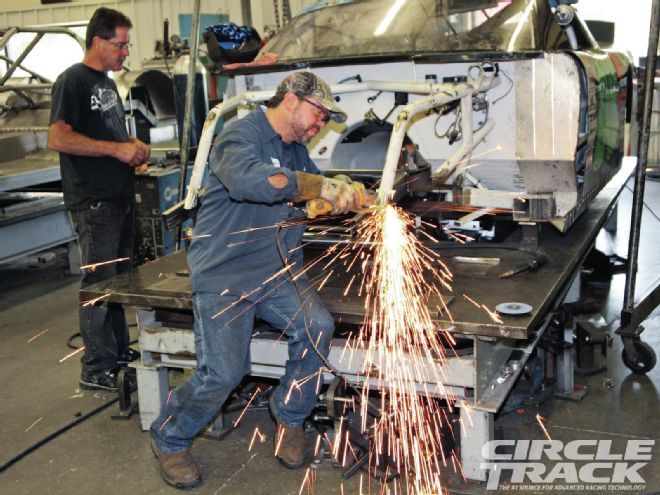
Your mother was right: Accidents happen.
That is a simple fact of life, and racing is no exception. We won’t get into the blame game of who is at fault when sheetmetal and chassis get bent, we’re more interested in getting your car fixed and back out on the track. Actually, the goal isn’t simply to get back onto the track, but to get there with a car that is just as good, or better than it was before the big hit.
One of the big problems with repairing a car that’s taken a big hit is that it somehow is just never the same as it was before. Many racing teams working on a limited budget (and let’s face it, that’s most of us) are forced to just live with it. A new chassis is out of the question and there’s no guarantee that the person who did the repair work would get it right if you took it back to have the “repair” repaired. As a result they wind up having to change their setups as a crutch to mask the problems caused by a chassis whose geometry is off.
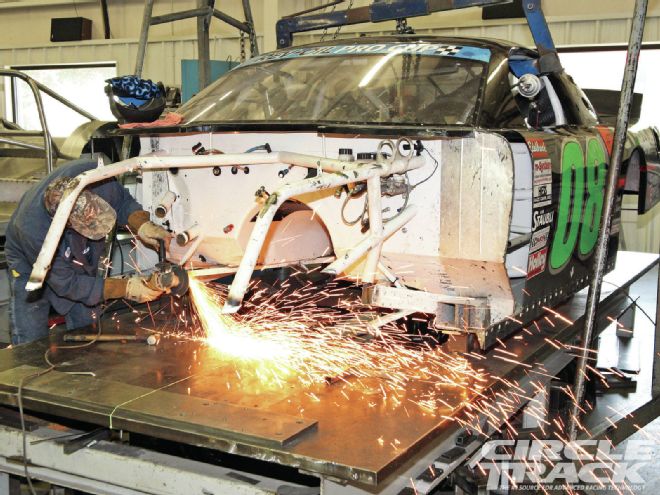 This is an asphalt touring car from a different builder brought to the Hess Race Cars shop for a new front clip after a wreck had caused severe front-end damage. By the time we arrived the damaged tubing had been cut away and fabricator Chris Cornet was prepping the remaining framework for the new front clip. He had already spent nearly an hour centering the chassis on the level plate and setting the car at the proper height.
This is an asphalt touring car from a different builder brought to the Hess Race Cars shop for a new front clip after a wreck had caused severe front-end damage. By the time we arrived the damaged tubing had been cut away and fabricator Chris Cornet was prepping the remaining framework for the new front clip. He had already spent nearly an hour centering the chassis on the level plate and setting the car at the proper height.
The truth of the matter is this should never be a problem. A quality chassis builder should be capable of repairing practically any wreck damage and ensuring that all the suspension pickup points are right where they should be so that the car handles just as it did before. It does require an investment in a level plate and jigs, and definitely quality fabrication skills, but it can be done.
04. Notice how the firewall has been wrinkled around the lower support tube. That’s a sign that the tube was bent inward during the wreck. And the gap around the hole on the lefthand side shows that the tube didn’t completely return to position once the bent clip was cut away. Cornet noted all this and determined that the tubing that remains hasn’t lost its structural integrity. He’ll wait to see how the new clip fits up before deciding whether more should be cut away.
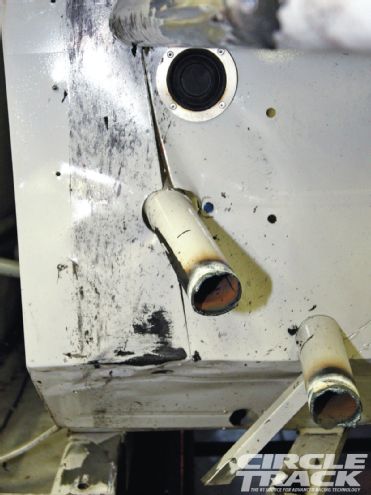
08. This is obviously not the same car, but it is easier to see with this chassis that’s still under construction. Before he can weld anything up, Cornet and Byrd set the ride heights on the level fabrication table. But, like with this new chassis under construction, it works opposite the way most people think. The car is set on a baseline level and then adjusted according to height changes. For example, the baseline number for the ride height may be six inches with the left-rear an inch higher. But for chassis repair and fabrication, the heights work opposite. The car is set up 6 inches off the plate, but the left-rear is at minus an inch (or 5 inches). This way the chassis can still be built on a level surface for accuracy, but once the suspension is installed the left-rear corner will sit 1 inch higher like it should.
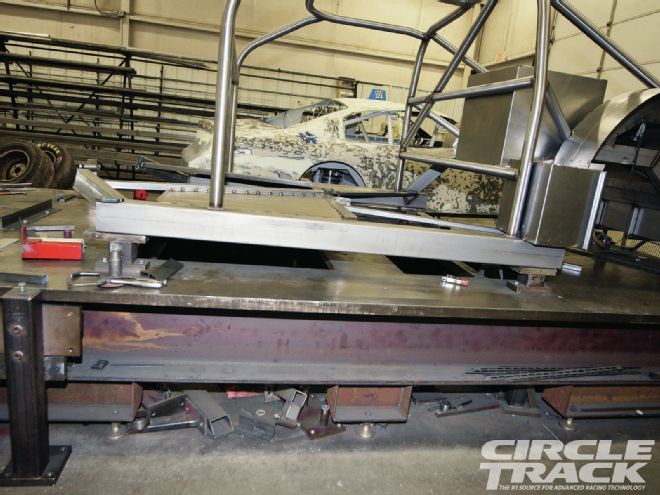
We know that most race shops don’t have the time or the hardware to make serious chassis repairs, but every race team should be able to identify when a chassis builder is capable of performing quality repair work.
15. One end of the square tubing connects to the round spring buckets on an angle. The cuts need to be as precise as possible, and the compound angles created by meeting the spring bucket off center can be tough to get right, so Hess Race Cars uses patterns like this made from aluminum sheetmetal to help simplify the process.">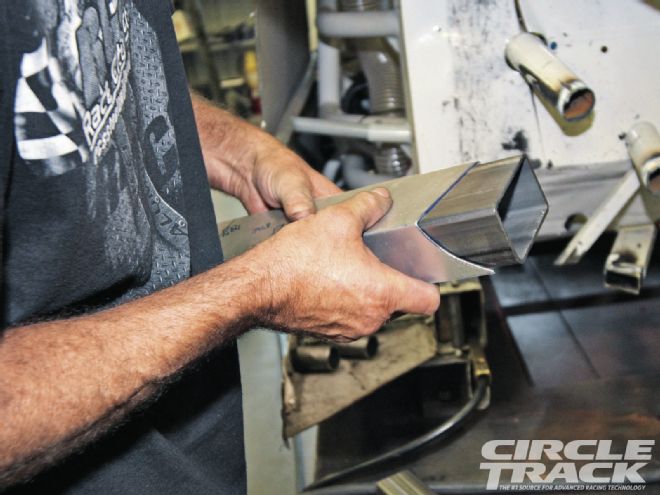 <strong>15. </strong>One end of the square tubing connects to the round spring buckets on an angle. The cuts need to be as precise as possible, and the compound angles created by meeting the spring bucket off center can be tough to get right, so Hess Race Cars uses patterns like this made from aluminum sheetmetal to help simplify the process.
<strong>15. </strong>One end of the square tubing connects to the round spring buckets on an angle. The cuts need to be as precise as possible, and the compound angles created by meeting the spring bucket off center can be tough to get right, so Hess Race Cars uses patterns like this made from aluminum sheetmetal to help simplify the process.
Hess Race Cars in Mooresville, North Carolina, is a shop exactly like that when it comes to asphalt racing chassis. They regularly build everything from Late Model Stocks to NASCAR touring cars. To show you how it’s done right, we documented one of the toughest repair tests any chassis builder faces. This is an asphalt touring car that took a pretty hard lick to the right front corner and requires a new front clip. Making matters more difficult is the fact that the car was originally fabricated by a different builder. The owner had already noticed the success that the Hess-built cars were having in the series and after the wreck, brought the car to the Hess shops for one of their front clips. Putting a new clip on one of your own cars is one thing, but the task gets much more difficult when trying to fabricate a new clip to a car with different attachment points between the clip and the framerails.
Other top-quality chassis builders may vary their methods slightly, but for the most part it all works the same. And we know this works because we’ve seen cars both built and repaired by the craftsmen at Hess Race Cars many times at many different racetracks.